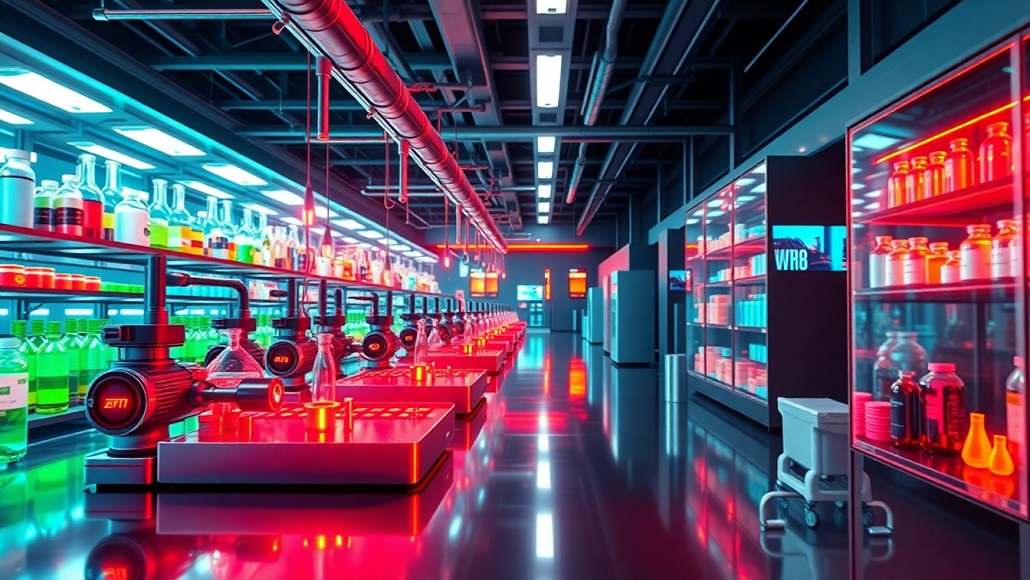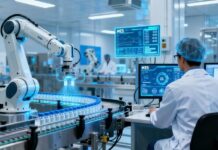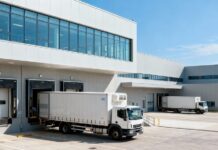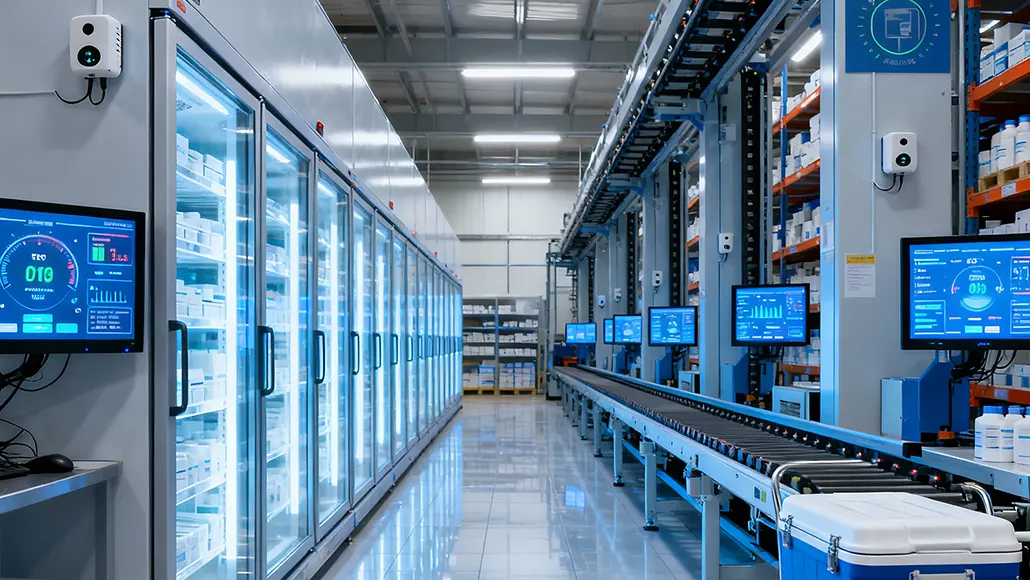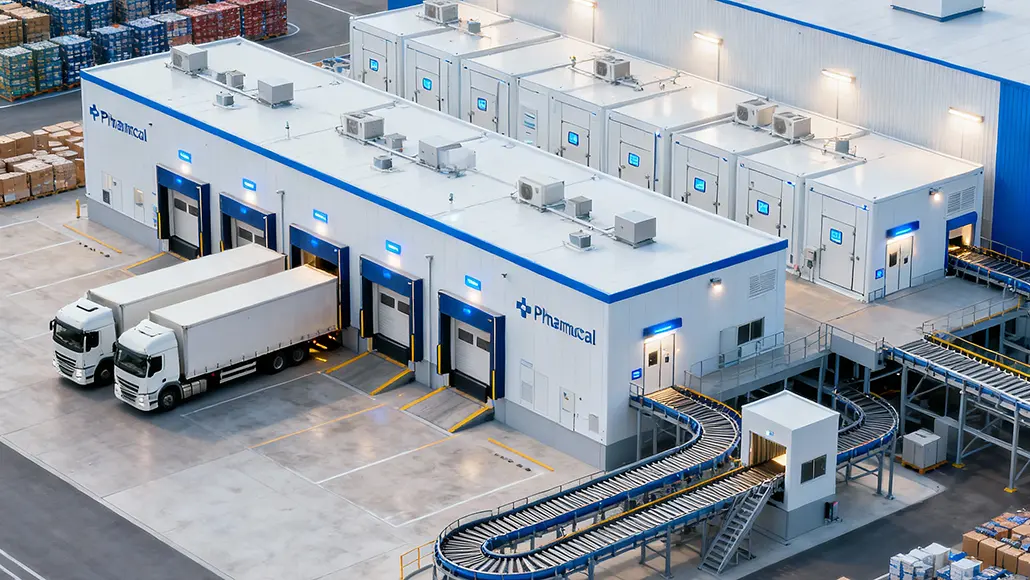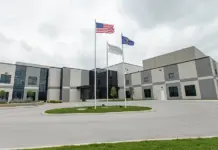Modern biomanufacturing facilities represent the convergence of advanced automation, sophisticated digital systems, and environmental stewardship principles. Next-generation facilities fundamentally differ from traditional pharmaceutical plants through their emphasis on intelligent process control, real-time quality assurance, and measurable sustainability outcomes. As the automation in the biopharma industry market grows from USD 2.2 billion in 2025 to a projected USD 2.92 billion by 2029, pharmaceutical manufacturers are systematically redesigning production infrastructure to achieve unprecedented efficiency, quality consistency, and environmental performance.
Advanced Automation and Robotics Integration
Robotics deployment across pharmaceutical manufacturing has accelerated dramatically, with industrial robot installations in the European manufacturing sector rising by 9 percent in 2024 alone, reaching a record high of 92,393 units. These systems represent far more than efficiency improvements; they fundamentally transform pharmaceutical manufacturing by reducing human error, minimizing product contamination risks, and enhancing worker safety while enabling continuous 24/7 production operations.
Contemporary pharmaceutical robots operate across multiple critical functions. In tablet and capsule manufacturing, automated systems ensure precise dosage accuracy while eliminating human variability. In sterile injectable production, robotic systems maintain aseptic conditions while achieving fill-finish operations with unprecedented consistency. Collaborative robots, or cobots, work alongside human scientists in research and quality control laboratories, automating sample preparation, liquid handling, and testing processes while maintaining rigorous safety standards.
The productivity benefits prove quantifiable and substantial. Pharmaceutical companies leveraging robotic automation achieve 30-50 percent increases in production throughput compared to traditional manual processes. More significantly, automation reduces product defects by up to 80 percent, ensuring consistently high-quality pharmaceuticals that meet stringent regulatory specifications. These improvements directly translate to reduced product recalls, minimized rework expenses, and enhanced market confidence in product safety and efficacy.
Pharmaceutical robotic systems also enhance workplace safety by automating hazardous tasks involving exposure to toxic chemicals, extreme temperatures, and heavy machinery operation. Potential workplace accident reduction approaches 70 percent when robotics handle these inherently dangerous activities. This safety enhancement proves particularly valuable in specialized manufacturing environments producing potent compounds, cytotoxic agents, and controlled substances where human exposure represents significant occupational hazard.
Manufacturing Execution Systems and Digital Integration
Manufacturing Execution Systems (MES) have evolved from supplementary documentation tools into foundational infrastructure for modern biopharmaceutical operations. These platforms serve as critical intermediaries between enterprise resource planning systems and production floor equipment, capturing real-time data from manufacturing processes and enabling automated compliance tracking throughout production cycles.
MES platforms replace traditional paper-based batch records with comprehensive electronic batch records that provide complete process visibility and traceability. This digital transformation delivers multiple strategic advantages. Real-time monitoring identifies process deviations early, enabling corrective action before product quality compromise. Automated compliance tracking ensures that every manufacturing stage meets predefined regulatory requirements, substantially reducing audit risk and simplifying regulatory inspection processes.
The pharmaceutical industry’s embrace of MES reflects recognition that operational visibility drives manufacturing excellence. Advanced MES analytics identify process inefficiencies and bottlenecks, enabling systematic optimization that improves both quality and throughput. Companies implementing sophisticated MES platforms achieve significant operational advantages through enhanced resource management, improved inventory control, and accelerated product launch timelines. These capabilities prove particularly valuable in complex manufacturing environments managing multiple concurrent product campaigns with distinct regulatory requirements and quality specifications.
Predictive Analytics and Intelligent Maintenance Systems
Next-generation biomanufacturing facilities integrate predictive analytics and advanced maintenance technologies that transition operations from reactive problem-solving to proactive optimization. Predictive analytics continuously monitor environmental variables including temperature, humidity, pressure, and chemical composition, forecasting conditions that could compromise product quality before deviations occur. This capability enables pharmaceutical manufacturers to intervene preventively, avoiding costly compliance violations and product losses.
Predictive maintenance systems utilize machine learning algorithms trained on historical equipment performance data to forecast component failures before they occur. Rather than scheduling maintenance on fixed intervals—a practice that often results in premature component replacement or unexpected breakdowns—predictive maintenance systems optimize service schedules based on actual equipment condition, reducing unplanned downtime while minimizing unnecessary maintenance activities. This approach significantly reduces manufacturing disruptions while extending equipment operational life and enhancing return on capital investment.
Environmental monitoring and control represent particularly important applications of predictive analytics in biopharmaceutical manufacturing. Temperature fluctuations, humidity variations, or pressure anomalies can compromise product integrity or introduce contamination risk. Sophisticated monitoring systems continuously analyze environmental data, predicting potential excursions and enabling automated facility controls to maintain optimal conditions. This continuous vigilance ensures consistent product quality while reducing the risk of compliance violations.
Sustainability and Green Manufacturing Principles
Environmental stewardship has become integral to next-generation biomanufacturing facility design. Leading pharmaceutical companies are incorporating sustainability principles throughout facility design, production processes, and operational practices. These facilities increasingly target environmental certifications—such as Singapore’s Green Mark gold certification—that validate sustainable design and operations. This commitment reflects recognition that environmental responsibility strengthens corporate reputation, attracts investment capital, and enhances patient and customer confidence in pharmaceutical products.
Waste minimization and reduction programs focus on optimizing raw material utilization, minimizing process waste, and implementing comprehensive recycling programs. Process efficiency improvements that reduce waste also lower production costs substantially. Companies achieving 20 percent reductions in waste generation through advanced analytics simultaneously enhance profitability while demonstrating commitment to environmental stewardship. These dual benefits position sustainable manufacturing as an increasingly attractive investment.
Energy efficiency improvements represent another critical sustainability focus. Modern biomanufacturing facilities incorporate LED lighting systems, optimized HVAC controls, and renewable energy integration that substantially reduce energy consumption. Real-time energy monitoring enables identification of inefficiencies and opportunities for improvement. For facilities managing energy-intensive operations like ultra-cold storage or active temperature control systems, systematic energy optimization produces significant cost savings while reducing environmental impact.
Modular and Flexible Facility Architecture
Next-generation biomanufacturing facilities increasingly embrace modular design principles that enable rapid reconfiguration for diverse products and therapeutic modalities. Rather than monolithic facilities optimized for single products, modular approaches allow companies to rapidly adapt manufacturing capacity to evolving market demands, new product launches, or changing therapeutic priorities.
Modular biomanufacturing platforms prove particularly valuable for companies pursuing personalized medicine, cell and gene therapies, or decentralized manufacturing models. These facilities can rapidly transition between different products without extended validation cycles, enabling manufacturing flexibility that would be impossible in traditional fixed-infrastructure environments. This architectural flexibility positions companies to respond quickly to market opportunities while minimizing capital requirements for capacity expansion.
Integration of Emerging Technologies
Artificial intelligence integration within biomanufacturing operations represents a rapidly expanding frontier. AI systems analyze vast manufacturing datasets to identify optimal process parameters, predict quality outcomes, and identify opportunities for continuous improvement. These capabilities enable pharmaceutical manufacturers to operate at the intersection of quality, efficiency, and sustainability—simultaneously maximizing product safety, minimizing costs, and reducing environmental impact.
Digital integration extends beyond factory floor equipment into supply chain operations, inventory management, and quality assurance. Blockchain technologies are increasingly deployed to enhance supply chain traceability and counterfeit prevention, while Internet of Things sensors provide real-time visibility into raw material conditions, in-process product status, and finished goods inventory. These integrated digital systems create comprehensive operational visibility that enables both reactive troubleshooting and proactive optimization.
Looking Forward: Industry Evolution and Strategic Imperatives
Next-generation biomanufacturing facilities represent the convergence of technological innovation, operational excellence, and environmental stewardship. Pharmaceutical companies successfully investing in these capabilities are positioning themselves to compete effectively in increasingly complex markets while meeting evolving regulatory expectations and customer sustainability requirements. As industry transformation accelerates, competitive advantage will increasingly accrue to companies embracing automation, digital integration, and sustainable practices throughout their manufacturing operations.







